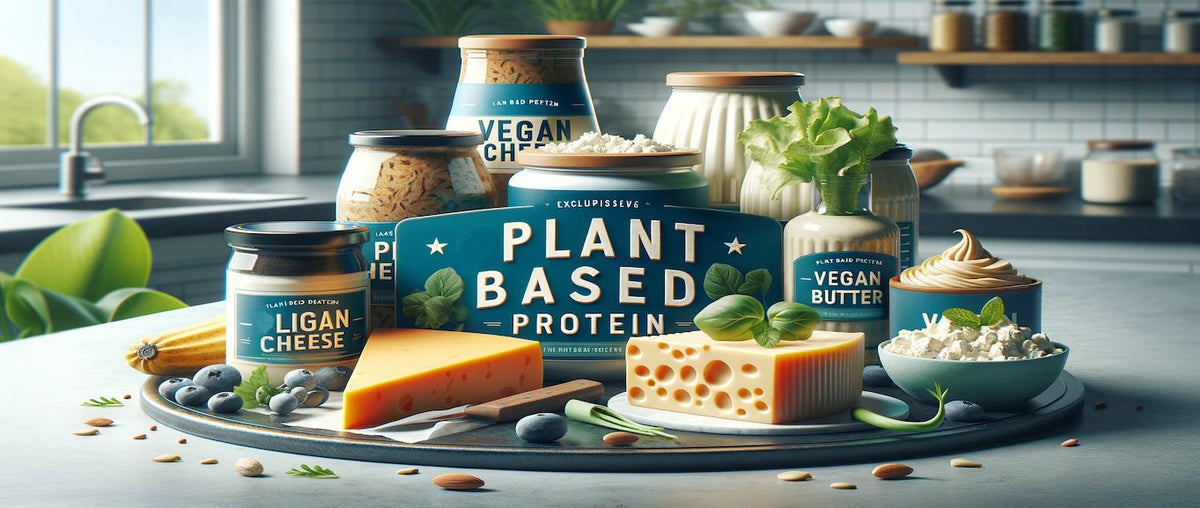How to Make Your Own Plant Based Milks at Home
Plant-based milks have become increasingly popular due to their numerous health benefits and their positive impact on the environment. Unlike dairy milk, plant-based milks are free from cholesterol, making them an excellent choice for those looking to maintain a healthy diet. Making your own plant-based milks at home not only allows you to control the ingredients but also ensures you consume fresh, preservative-free beverages. This guide will walk you through the process of making various plant-based milks, highlighting their benefits and providing tips for achieving the best results.
Key Takeaways
- Plant-based milks are healthy, environmentally friendly, and easy to make at home.
- Common ingredients include nuts, seeds, grains, and legumes.
- Homemade plant-based milks are free from preservatives and additives.
- Essential equipment includes a blender, nut milk bag, fine mesh strainer, and jars.
- Popular recipes include almond milk, oat milk, soy milk, cashew milk, coconut milk, rice milk, and hemp milk.
- Homemade vegan milk offers health benefits, cost savings, and customization.
- Best plant based milk for kids is determined by nutritional needs and preferences.
- Best milk for the environment varies; sustainability practices are crucial.
- Making alternative milk at home provides control over ingredients and reduces waste.
Equipment and Ingredients
To get started with making your own plant-based milks, you'll need some basic equipment and ingredients. The essential equipment includes a high-speed blender, which is ideal for breaking down the nuts, seeds, or grains into a smooth mixture. You will also need a nut milk bag or a fine mesh strainer to strain the milk and remove any pulp. Lastly, jars or bottles are necessary for storing your homemade milk.
The common ingredients for making plant-based milks are versatile and include nuts such as almonds, cashews, and hazelnuts; seeds like hemp, sesame, and sunflower seeds; grains such as oats, rice, and quinoa; and legumes like soybeans and peas.
Step-by-Step Guide
Preparing Ingredients
Soaking the nuts, seeds, and grains is a crucial step in making plant-based milks. Soaking helps to soften these ingredients, making them easier to blend and improving the texture of the milk. Typically, nuts should be soaked for 8-12 hours, seeds for 4-6 hours, and grains for 4-8 hours. This process also helps to remove phytic acid and enzyme inhibitors, which can enhance the nutritional profile of your milk.
Blending Process
The blending process involves combining the soaked ingredients with water. A common ratio is 1 cup of nuts, seeds, or grains to 3-4 cups of water, but you can adjust the water amount to achieve your desired consistency. Blend the mixture at high speed until smooth. For a creamier texture, blend for a longer period.
Straining and Storage
After blending, you need to strain the mixture to separate the milk from the pulp. Pour the blended mixture into a nut milk bag or through a fine mesh strainer and squeeze or press to extract as much liquid as possible. Store the milk in a jar or bottle in the refrigerator. Homemade plant-based milk typically lasts 3-5 days.

Popular Plant-Based Milk Recipes
How to Make Almond Milk
Almond milk is one of the most popular plant-based milks due to its creamy texture and nutty flavor. Here’s how to make it:
Ingredients:
- 1 cup almonds (soaked)
- 4 cups water
- Optional: sweetener (dates, maple syrup), vanilla extract
Steps:
1. Soak the almonds overnight.
2. Drain and rinse the almonds.
3. Blend almonds with water until smooth.
4. Strain the mixture using a nut milk bag.
5. Store in a jar in the refrigerator.
You can customize almond milk by adding sweeteners like dates or maple syrup, or flavoring it with vanilla extract or cocoa powder for a delicious twist.
How to Make Oat Milk
Oat Milk is a great alternative for those who prefer a creamy and slightly sweet milk. It’s also budget-friendly and easy to make.
Ingredients:
- 1 cup oats
- 4 cups water
- Optional: sweetener (honey, agave), pinch of salt
Steps:
1. Soak oats for 30 minutes.
2. Drain and rinse the oats.
3. Blend oats with water until smooth.
4. Strain using a fine mesh strainer.
5. Store in a jar in the refrigerator.
To prevent sliminess, use cold water to blend and avoid over-blending the oats.
Nutritional Benefits of Plant-Based Milks
Plant-based milks offer a range of nutritional benefits. Almond milk is low in calories and high in vitamin E, making it great for skin health. Oat milk contains fiber and beta-glucans, which are beneficial for heart health. Soy milk is high in protein and contains all essential amino acids, making it a good option for a weight gain diet plan. Cashew milk is creamy and a good source of healthy fats, while coconut milk is rich in medium-chain triglycerides (MCTs). Rice milk is hypoallergenic and easy to digest, and hemp milk is rich in omega-3 and omega-6 fatty acids.
What Are the Benefits of Making Homemade Vegan Milk?
Making your own vegan milk at home has several benefits. It allows you to avoid preservatives and additives found in store-bought options, leading to a Healthy Drinks. It is also more economical, as the cost of making plant-based milk at home is typically lower than purchasing it. Furthermore, you can customize your milk to suit your taste preferences and dietary needs, adding sweeteners, flavors, and varying the consistency.
Which Is the Best Milk for Kids?
When choosing the best plant-based milk for kids, consider their nutritional needs. Almond milk is a good option for children with lactose intolerance. Oat milk is high in fiber and beneficial for digestive health, while soy milk provides complete protein similar to dairy milk. Each of these options can support a healthy diet for children.
Which Is the Best Milk for the Environment?
Different plant-based milks have varying environmental impacts. Oat milk, for example, requires low water usage and has a minimal environmental footprint, making it one of the best options. Almond milk, although it requires more water, produces less greenhouse gas emissions compared to dairy milk. Hemp milk is also a sustainable choice, as hemp is a low-impact crop.
Also Read
Why Make Alternative Milk at Home?
There are several reasons to make alternative milk at home. You have complete control over the ingredients, ensuring that your milk is free from unwanted additives and preservatives. Homemade milk is fresher and can be customized to your taste preferences. Additionally, making milk at home helps reduce packaging waste, contributing to a more sustainable lifestyle.
Troubleshooting Common Issues
When making plant-based milks, you may encounter some common issues. For a creamy consistency, blend the mixture longer or add a small amount of oil, such as coconut oil. Separation is natural in homemade plant-based milks; simply shake well before use. If your milk tastes bitter, consider removing the skins from nuts or avoid over-blending.
Conclusion
Making your own plant-based milks at home is a rewarding and healthy practice. By following these steps and tips, you can enjoy fresh, delicious, and nutritious homemade milks. Experiment with different recipes and find your favorite combinations. Embrace the benefits of a plant-based diet and contribute to a sustainable lifestyle.
If you are a vegan, looking to dine something vegan in your city, check out our list of vegan restaurants in India.










